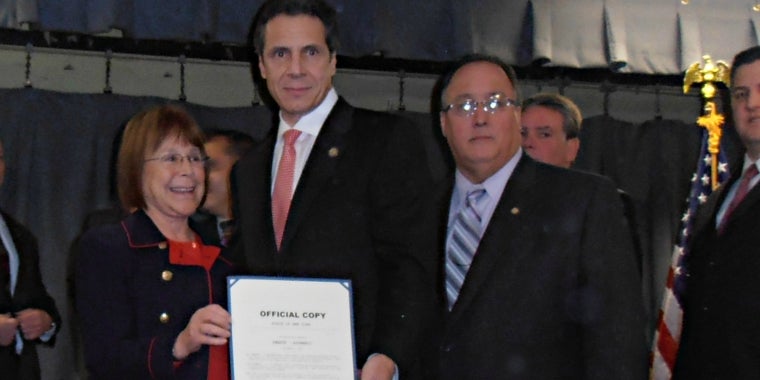
H1n1 (Swine) Flu Outbreak
Suzi Oppenheimer
May 4, 2009
New York Reaction
On Sunday, April 26, Governor Paterson also activated the health emergency preparedness for New York.
This enabled the state and local governments to receive faster access to resources and heightened the level of monitoring taking place. The state is coordinating a response through its Health Alert Network (HAN), using it to communicate and coordinate disease monitoring activity, laboratory testing, and the proper health care response with local health departments, hospitals and providers.
The New York State Department of Health (DOH) is also monitoring the utilization of resources to ensure that medications and preventive supplies such as masks are used properly. Wadsworth Laboratory has developed a rapid testing mechanism for the identification of severe illnesses. Finally, DOH is monitoring hospital emergency department visits for spikes in visits resulting from respiratory illness and Medicaid prescriptions for increases in influenza medications. No increased level in either has currently been identified.
DOH has dispensed 1,500 courses of treatment to New York City, as requested by the NYC Department of Health and Mental Hygiene (NYCDOHMH). There are 6,000 total courses available in the non-pandemic stockpile.
While some shortages of Tamiflu are being reported at isolated pharmacies, the Department of Health is reporting that there is no reason to suspect a shortage of the medication.They have been in contact with manufacturers, who assure them that there is plenty available. The Department then reached out to distributors to ensure that more of the drugs are coming into the state and effected areas promptly.
There are an additional 2.4 million courses in the pandemic stockpile, in the event they become needed. These pandemic sources would be supplemented by 2.2 million courses from the federal government. It is important to note that these were purchased at an extremely discounted rate for use in a pandemic only. We would have to reimburse the difference if they were used and a pandemic was not declared by either the CDC or the WHO.
A press conference on the outbreak in New York City Sunday included Mayor Bloomberg and NYC Health Commissioner Frieden, Senator Schumer, House Members Rangel, Nadler and Maloney, Majority Leader Smith, Senator Perkins, Assembly Member Wright and City Council Speaker Quinn. Subsequent press conferences have been held by state and city officials to keep the public updated about the current situation.
Background on the Virus
H1N1 flu is a variant of influenza that historically has been spread by those in close contact with pigs. The most common form of the virus is the H1N1 subtype, but there are others. The new strain of swine flu is of the H1N1 subtype; however, it is airborne and being passed on from human to human. This is a development that has the Center for Disease Control (CDC) and the World Health Organization (WHO) concerned about the possibility of a pandemic. Since the majority of the populace does not have regular contact with pigs, they will not have any immunity to the virus. Therefore, the disease’s new ability to spread from human to human is of even more serious concern to health officials.
Experts are also concerned because at this point, the reported cases are not clustered among those who are over 64 or under 3, which is the usual high-risk group. Because of all of these factors, and the fact that the cases are not geographically bunched, the WHO is paying close attention to the matter and, as of Saturday afternoon, called the disease “a health emergency of international concern.”
As news reports about swine flu become more prevalent, it is important to understand the disease and know the latest information. Below are links to leading health websites providing the most up-to-date information about this disease. In the meantime, it is important to remember that the most effective way to fight any disease is through prevention. Basic prevention strategies include:
o Washing your hands often with soap and warm water. Alcohol-based hand cleansers are also effective.
o Avoiding people who are ill.
o Staying home from work or school if you are sick.
o Using tissue when you cough, sneeze orspit, and dispose of the tissue in a covered trash bin.
o Keeping hands away from your face, Avoid touching your eyes, nose or mouth.
o Cleaning shared space more often such as phone receivers, keyboards, steering wheels and office equipment.
o Refraining from sharing personal items such as forks, spoons, toothbrushes and towels.
Swine Flu Resources:
Swine Flu Hotline: 1-800-808-1987
New York State Department of Health:
http://www.nyhealth.gov/diseases/communicable/influenza/seasonal/swine_flu/
New York City Department of Health and Mental Hygiene:
http://www.nyc.gov/html/doh/html/home/home.shtml
World Health Organization:
http://www.who.int/csr/don/en/index.html
Centers for Disease Control:
www.cdc.gov/swineflu

